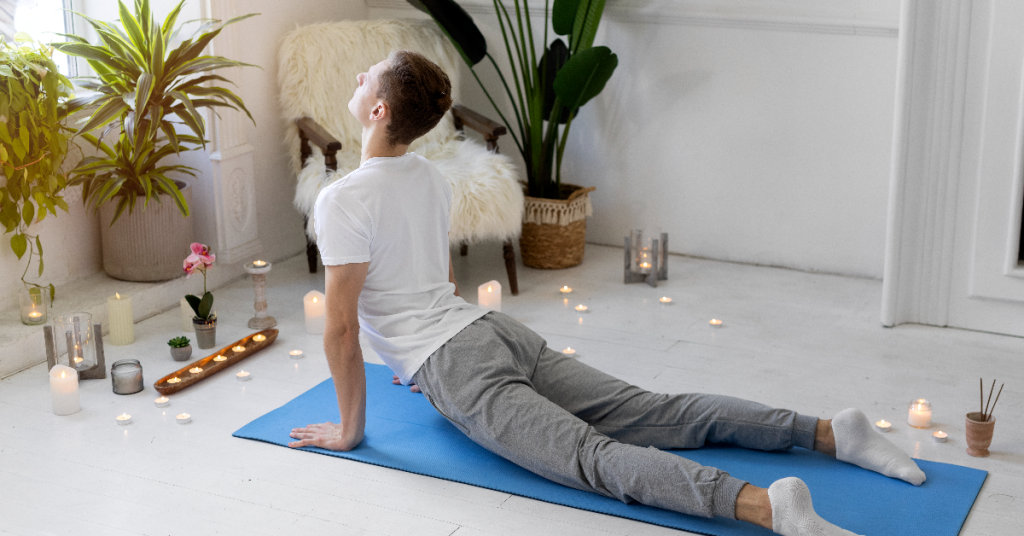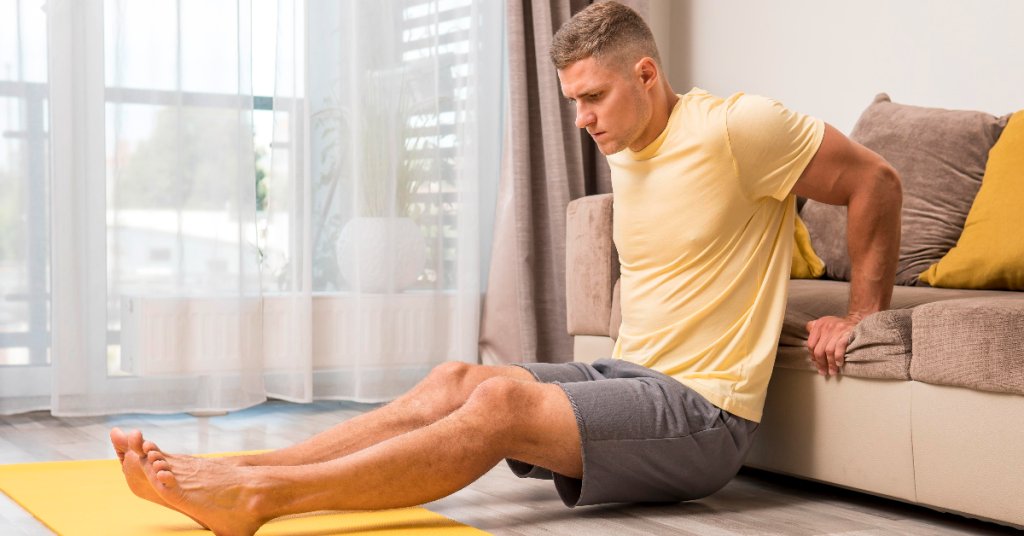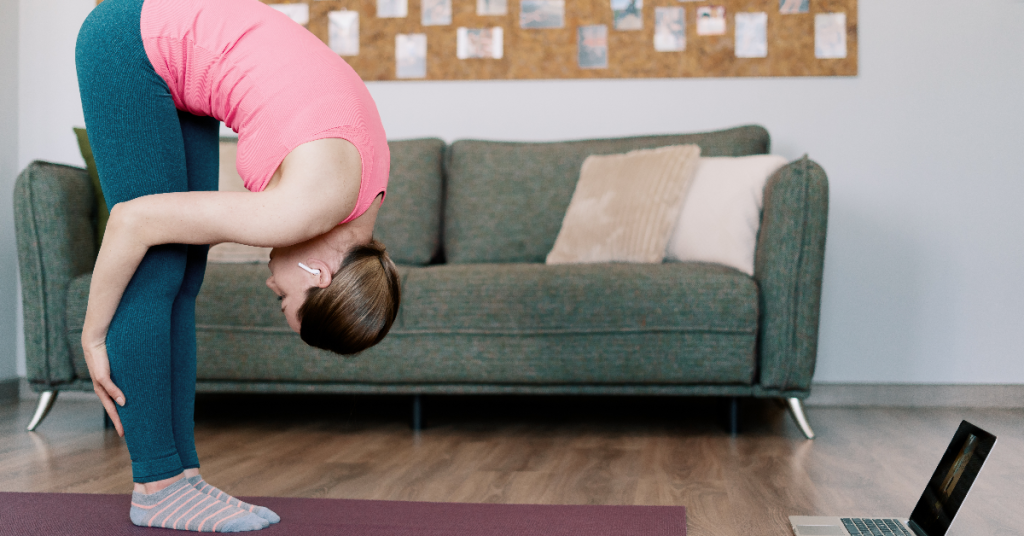Lower back pain is something that many people experience, no matter their age. It can happen for many reasons like sitting too long, lifting things the wrong way, sleeping in a bad position, stress, or weak muscles. Sometimes, people go to the doctor and take medicine to help with the pain. But other times, people prefer to try natural ways to feel better without relying on medicine. These natural remedies are simple and safe, and they help you deal with the pain at home. Doctors and medicines can help. But not everyone wants to take tablets all the time. That is why many people look for home remedies for lower back pain. These remedies are simple, natural, and safe. You can do them at home without special machines.
One reason many people choose natural remedies is that they don’t involve pills or visits to the doctor. They’re usually cheaper and don’t come with side effects like some medicines. Many people also want to avoid taking medicine all the time and would rather fix the problem at the source. The most important thing to remember when trying to reduce back pain is understanding what causes it. By improving habits like posture and doing stretches or exercises, you can help your body heal and avoid making the problem worse. These remedies are easy to do at home, and if you do them regularly, they can help reduce pain over time. Whether it’s sitting correctly, stretching, using heat or cold, or even trying some natural oils and herbs, each of these methods helps to relieve pain and support your back. By using natural ways to care for your back, you can feel better and avoid relying on medicine for long-term relief.
Be Careful About Posture
One of the most important causes of lower back pain is bad posture.
When you sit in the wrong way, or stand for a long time with a bent back, your muscles become weak. Over time, your spine feels pressure, and pain starts.
How to fix posture at home:
- Always sit with your back straight.
- Keep your feet flat on the ground.
- Use a chair with back support.
- Do not bend your neck forward while looking at a mobile or computer.
- Every 30–40 minutes, stand up and stretch.
Good posture is not only about sitting. It is also about how you walk, sleep, or even lift things. If you lift a heavy box, do not bend your back. Instead, bend your knees and use your legs to lift. Simple changes in posture can reduce a lot of lower back pain naturally.
Tip:
Many people think pain comes only from accidents or injuries. But often it is small daily habits like sitting too long in one position that cause trouble. So, “the next posture is your best posture.” Keep moving, keep adjusting.
Physical Activity & Exercises
2. Gentle Physical Activity
If your back hurts, you may feel like resting all day. But too much rest can make the pain worse. Muscles become stiff and weak.
That is why doctors and physiotherapists suggest gentle physical activity. It does not mean heavy gym workouts. Simple activities like:
- Walking 20–30 minutes daily
- Swimming (very good because it is light on joints)
- Cycling at slow speed
These movements increase blood flow, reduce stiffness, and help muscles stay strong.
3. Physiotherapy Exercises for Lower Back Pain
Special physiotherapy exercises can heal lower back pain. These are designed by experts to strengthen the spine and core muscles.
Some effective lower back pain exercises at home include:
- Pelvic tilt: Lie on your back, bend knees, and press lower back gently to the floor.
- Cat-Cow stretch: On hands and knees, slowly arch and round your back.
- Bridge exercise: Lie down, bend knees, lift hips up slowly.
These exercises are safe for most people. But if you are a senior, choose very easy moves. For example:
- Gentle knee-to-chest stretch
- Simple leg stretches on the bed
- Short walks instead of running
These are good exercises for lower back pain for seniors because they are safe and low-impact.
Tip:
Not all exercises are good. Some can make pain worse. For example, lower back pain exercises to avoid include heavy weightlifting, deep forward bends, and sudden twisting moves. Always start slowly, listen to your body, and if pain increases, stop immediately.

4. Yoga for Lower Back Pain Relief
Yoga is an ancient practice. It combines movement, breathing, and relaxation. Many studies show yoga can reduce lower back pain and improve flexibility.
When you do yoga, your muscles stretch slowly. This makes your spine stronger and more flexible. Yoga also calms the mind, which reduces stress pain.
Best yoga poses for lower back pain:
- Child’s Pose: Kneel down, sit back on your heels, and stretch arms forward. This relaxes the spine.
- Cat-Cow Pose: On hands and knees, bend your back up like a cat, then lower it down slowly like a cow. This improves spine movement.
- Pigeon Pose: Stretches hips and reduces lower back tightness.
You don’t need to do all the poses at once. Start with just one or two for 5 minutes daily. Slowly, increase the time.
Tip:
Yoga is not about perfection. Even if you cannot bend fully, small movements help. The key is to breathe slowly and relax your body.
5. Meditation and Mind Relaxation
Sometimes pain feels worse when we are stressed. Stress makes muscles tight and increases discomfort. That is why meditation can be very useful.
Meditation means sitting quietly, focusing on breathing, and calming the mind. This helps the brain reduce pain signals. It also improves sleep and lowers anxiety.
Simple meditation steps:
- Sit in a quiet place.
- Close your eyes.
- Breathe slowly, in and out.
- If thoughts come, don’t fight. Just focus back on breathing.
You can also try guided meditation with mobile apps or YouTube videos.
Many people who combine yoga and meditation for lower back pain feel better not just physically, but also mentally.
6. Heat and Cold Therapy
When pain comes suddenly, like after lifting something heavy, cold therapy works best. Cold reduces swelling and numbs sharp pain.
How to use cold therapy:
- Take an ice pack or wrap ice cubes in a towel.
- Place on the painful area for 10–15 minutes.
- Do not put ice directly on the skin.
For old or stiff back pain, heat therapy is better. Heat relaxes tight muscles and improves blood flow.
How to use heat therapy:
- Use a hot water bag or heating pad.
- Apply for 15–20 minutes.
- You can also take a warm shower or bath.
Some people feel better with a mix: first cold pack for swelling, then heat to relax muscles.
Tip:
Do not use heat or ice for too long. Short, repeated sessions are more effective and safer.
7. Herbal Remedies for Back Pain
Nature also gives us healing power. Some herbs are known to reduce inflammation and pain.
Best herbs for lower back pain relief:
- Turmeric: Contains curcumin, a natural anti-inflammatory. Drink turmeric milk or take capsules.
- Ginger: Works like a natural painkiller. You can drink ginger tea.
- Willow Bark: Used for centuries for pain relief. (Like natural aspirin.)
You can prepare simple herbal teas at home. Example:
- Boil water.
- Add fresh ginger slices or turmeric powder.
- Drink warm, once or twice daily.
Tip:
Even though herbs are natural, they can react with medicines. So if you are already taking tablets, ask your doctor before starting herbal remedies.
Extra Tip:
Massage with herbal oils like eucalyptus or lavender also helps. It relaxes muscles and gives a warm, soothing effect.
8. Massage Therapy for Lower Back Pain
Massage is one of the oldest and most relaxing ways to reduce pain. It improves blood flow, reduces muscle tension, and makes the body feel calm.
For lower back pain treatment naturally, massage can:
- Release tight muscles.
- Reduce stress.
- Improve movement.
Types of massage helpful for back pain:
- Swedish Massage: Gentle strokes, good for relaxation.
- Deep Tissue Massage: Targets deeper muscles, useful for chronic pain.
- Shiatsu Massage: A Japanese method using pressure points.
If you cannot go to a spa, you can also do self-massage at home with oils like coconut, eucalyptus, or mustard oil. Even 10 minutes of gentle rubbing can relax your back.
Tip:
Massage is best when combined with stretching or light exercises. After massage, try simple lower back pain exercises at home to strengthen your muscles.
9. Acupuncture for Pain Relief
Acupuncture is a traditional Chinese method where fine needles are inserted in special points of the body. Today, many doctors also use it as medical acupuncture.
Benefits for lower back pain:
- Stimulates release of endorphins (natural painkillers).
- Improves blood flow in the back area.
- Relaxes tight muscles.
- Reduces stress and improves sleep.
Some people feel relief after just one or two sessions. Others may need more treatments. Always go to a certified therapist for safe results.
Tip:
Even if you are afraid of needles, acupuncture is usually painless. The needles are very thin, and many people only feel a small pinch or nothing at all.
10. Ergonomic and Supportive Devices
Sometimes, pain continues because our daily environment is not back-friendly. For example, sitting long hours on a hard chair, or sleeping on a very soft mattress.
Ergonomic solutions:
- Mattress and Pillow: Choose medium-firm mattress that supports spine. Pillow should not be too high or too flat.
- Office Chair: Use an ergonomic chair with good lumbar (lower back) support.
- Standing Desk: If possible, use a desk where you can change between sitting and standing.
- Lumbar Cushions: Small back support cushions can help when traveling or sitting for long.
If you spend a long time at a computer, keep the screen at eye level. Your feet must touch the floor flat.
Tip:
Many people buy expensive chairs but forget posture. The best device is helpful only if you sit properly.
11. Dietary Changes for Back Health
What we eat affects inflammation in the body. Some foods increase swelling and pain, while others reduce it.
Foods to eat for lower back pain:
- Omega-3 rich foods: Fish (salmon, tuna), walnuts, flax seeds.
- Antioxidant foods: Berries, oranges, grapes.
- Leafy greens: Spinach, kale, broccoli.
- Herbs and spices: Turmeric, garlic, ginger.
Foods to avoid:
- Processed foods (fast food, chips, packaged snacks).
- Too much sugar.
- Fried and oily food.
- Excess alcohol.
Drinking enough water also keeps the spine healthy. Dehydration can make discs weak.
Tip:
Diet alone may not remove pain completely, but combined with exercises and posture care, it makes recovery faster.
Connecting Everything Together
Now we have covered most remedies: posture, exercise, yoga, meditation, heat/cold, herbs, massage, acupuncture, ergonomic devices, and diet.
All these methods are safe, but they work best when combined. For example:
- Good posture + gentle stretching = less daily pain.
- Massage + herbal oils + yoga = deep relaxation.
- Healthy diet + walking daily = long-term back strength.
Easing Lower Back Pain Naturally
Lower back pain is a problem for millions of people around the world. It can happen at any age. Sitting too long, lifting heavy items, wrong posture, weak muscles, or even stress can cause pain. Many times people take medicines, but medicines only give short relief.
The good news is that there are many home remedies to ease lower back pain naturally. In this guide, we talked about 10 proven remedies:
- Correct posture – Sit and stand straight.
- Gentle physical activity – Walk, swim, or cycle.
- Physiotherapy exercises for lower back pain – Simple moves at home.
- Yoga – Poses like Child’s Pose and Cat-Cow.
- Meditation – Calm the mind, reduce stress pain.
- Heat and cold therapy – Relax muscles and reduce swelling.
- Herbal remedies – Turmeric, ginger, willow bark.
- Massage therapy – Release tightness, improve blood flow.
- Acupuncture – Natural pain relief through pressure points.
- Ergonomic support and diet changes – Good mattress, supportive chair, anti-inflammatory food.
Each of these remedies can help, but the best result comes when you use a mix of them in your daily life. For example, yoga + healthy diet + correct posture can reduce pain and stop it from coming back.
Remember, every body is different. Some people feel better with exercise, others with massage or herbal tea. Try slowly, find what works best for you. And if pain is very strong or continues for many weeks, always consult a doctor or physiotherapist.
Why Choose Natural Remedies for Back Pain
When dealing with lower back pain, many people look for natural ways to manage it. While medications and physical therapy are helpful, natural remedies can offer an easier, more gentle approach. Here are some reasons why natural solutions are worth considering for back pain:
1. Safe and Non-Invasive
Natural remedies are safe and don’t involve surgery or strong medications. Treatments like stretching, yoga, and heat or cold therapy help your body recover without causing any harm. Unlike more invasive options, these methods let your body heal at its own pace without risks or long recovery times.
2. Cost-Effective and Easy to Access
Natural remedies are often cheaper than medical treatments. You don’t need expensive doctor visits or prescription medications. Many remedies, such as stretching, using a heating pad, or improving posture, cost little to nothing. You can easily incorporate these practices at home, saving time and money.
3. Reduces Dependence on Medication
Painkillers may relieve pain temporarily, but they only mask the problem. Over time, relying on medication can lead to side effects and dependence. Natural remedies tackle the root cause of the pain, helping to heal and prevent future issues. Exercises and stretching, for example, strengthen the muscles, which prevents pain from coming back.
4. Supports Overall Health
Natural remedies benefit more than just your back. Practices like exercise, yoga, and stretching not only relieve back pain but also improve your flexibility, strength, and circulation. Reducing stress through relaxation methods can also help ease back tension. So, instead of just treating pain, you’re improving your whole body.
5. Focuses on Prevention
Unlike treatments that just focus on the pain, natural remedies help you stay pain-free in the long run. Regular stretching and strengthening exercises prevent future injuries and improve posture. When you take care of your body consistently, it becomes less likely that back pain will return.
6. Easy to Adjust to Your Needs
Natural remedies are flexible. Everyone’s body is different, so what works for one person might not work for another. Luckily, you have many options. You can experiment with different stretches, use heat or cold therapy, and find what feels best for your back. This allows you to create a routine that fits you.
7. Fewer Side Effects
Medications often come with unwanted side effects like drowsiness, stomach issues, or dizziness. On the other hand, most natural remedies, such as gentle stretching, yoga, or applying heat and cold, come with few or no side effects. Even herbal treatments like turmeric have very low risk when used properly.
Final Words
Lower back pain can disturb your daily life. But with natural remedies, you can manage pain without always depending on medicine. Correct posture, simple exercises, yoga, meditation, massage, and healthy diet are powerful tools. The key is to start slow, stay regular, and take care of your body. If you do, you can enjoy a stronger back and a happier life.
FAQs About Home Remedies for Lower Back Pain
1. What is the best natural remedy for lower back pain?
There is no single best remedy. A mix of physiotherapy exercises for lower back pain, correct posture, yoga, and a healthy diet works best.
2. Can I do lower back pain exercises at home safely?
Yes. Simple exercises like pelvic tilt, cat-cow stretch, and bridges are safe. Always move slowly. Stop if pain gets worse.
3. Which are the best exercises for lower back pain for seniors?
Seniors should try gentle movements like walking, knee-to-chest stretch, and light leg lifts. These are safe and improve flexibility without too much strain.
4. Are there any lower back pain exercises to avoid?
Yes. Avoid heavy weightlifting, deep forward bends, and sudden twisting. These can increase pain and cause injury.
5. How do I know if my back pain needs medical help?
If pain is very strong, does not improve in 2–3 weeks, or comes with numbness in legs, you should see a doctor or physiotherapist.
6. Can yoga replace physiotherapy?
Yoga is very helpful, but it is not always a replacement for professional physiotherapy exercises for lower back pain. Both together can give the best results.
7. How long does it take to see results with natural remedies?
Some people feel better in a few days with posture and stretching. Others may take 3–6 weeks. Consistency is important.
8. Is heat better or cold for back pain?
For sudden new pain, use cold packs to reduce swelling. For old or stiff pain, use heat therapy to relax muscles.
9. Can diet really reduce lower back pain?
Yes. Anti-inflammatory foods like fish, berries, turmeric, and leafy greens reduce swelling. Avoid fried foods, sugar, and alcohol.
10. Are herbal remedies safe for everyone?
Herbs like turmeric and ginger are safe for most people. But if you take regular medicines, consult a doctor before starting herbal remedies.


